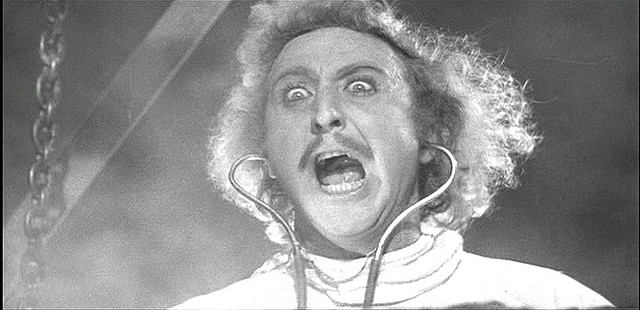From “Robot Evolution,” Emily Monosson’s Aeon essay, which concerns the shock of the new and the unpredictable emergent behaviors that can accompany such a thing:
“In a laboratory tucked away in a corner of the Cornell University campus, Hod Lipson’s robots are evolving. He has already produced a self-aware robot that is able to gather information about itself as it learns to walk. Like a Toy Story character, it sits in a cubby surrounded by other former laboratory stars. There’s a set of modular cubes, looking like a cross between children’s blocks and the model cartilage one might see at the orthopaedist’s – this particular contraption enjoyed the spotlight in 2005 as one of the world’s first self-replicating robots. And there are cubbies full of odd-shaped plastic sculptures, including some chess pieces that are products of the lab’s 3D printer.
In 2006, Lipson’s Creative Machines Lab pioneered the Fab@home, a low-cost build-your-own 3D printer, available to anyone with internet access. For around $2,500 and some tech know-how, you could make a desktop machine and begin printing three-dimensional objects: an iPod case made of silicon, flowers from icing, a dolls’ house out of spray-cheese. Within a year, the Fab@home site had received 17 million hits and won a 2007 Breakthrough of the Year award fromPopular Mechanics. But really, the printer was just a side project: it was a way to fabricate all the bits necessary for robotic self-replication. The robots and the 3D printer-pieces populating the cubbies are like fossils tracing the evolutionary history of a new kind of organism. ‘I want to evolve something that is life,’ Lipson told me, ‘out of plastic and wires and inanimate materials.’
Upon first meeting, Lipson comes off like a cross between Seth Rogen and Gene Wilder’s Young Frankenstein (minus the wild blond hair). He exudes a youthful kind of curiosity. You can’t miss his passionate desire to understand what makes life tick. And yet, as he seeks to create a self-assembling, self-aware machine that can walk right out of his laboratory, Lipson is aware of the risks. In the corner of his office is a box of new copies of Out of Control by Kevin Kelly. First published in 1994 when Kelly was executive editor of Wired magazine, the book contemplates the seemingly imminent merging of the biological and technological realms — ‘the born and the made’ — and the inevitable unpredictability of such an event. ‘When someone wants to do a PhD in this lab, I give them this book before they commit,’ Lipson told me. ‘As much as we are control freaks when it comes to engineering, where this is going toward is loss of control. The more we automate, the more we don’t know what’s going to come out of it.’”
Tags: Emily Monosson, Hod Lipson

